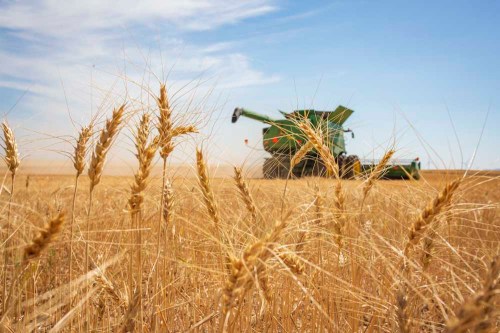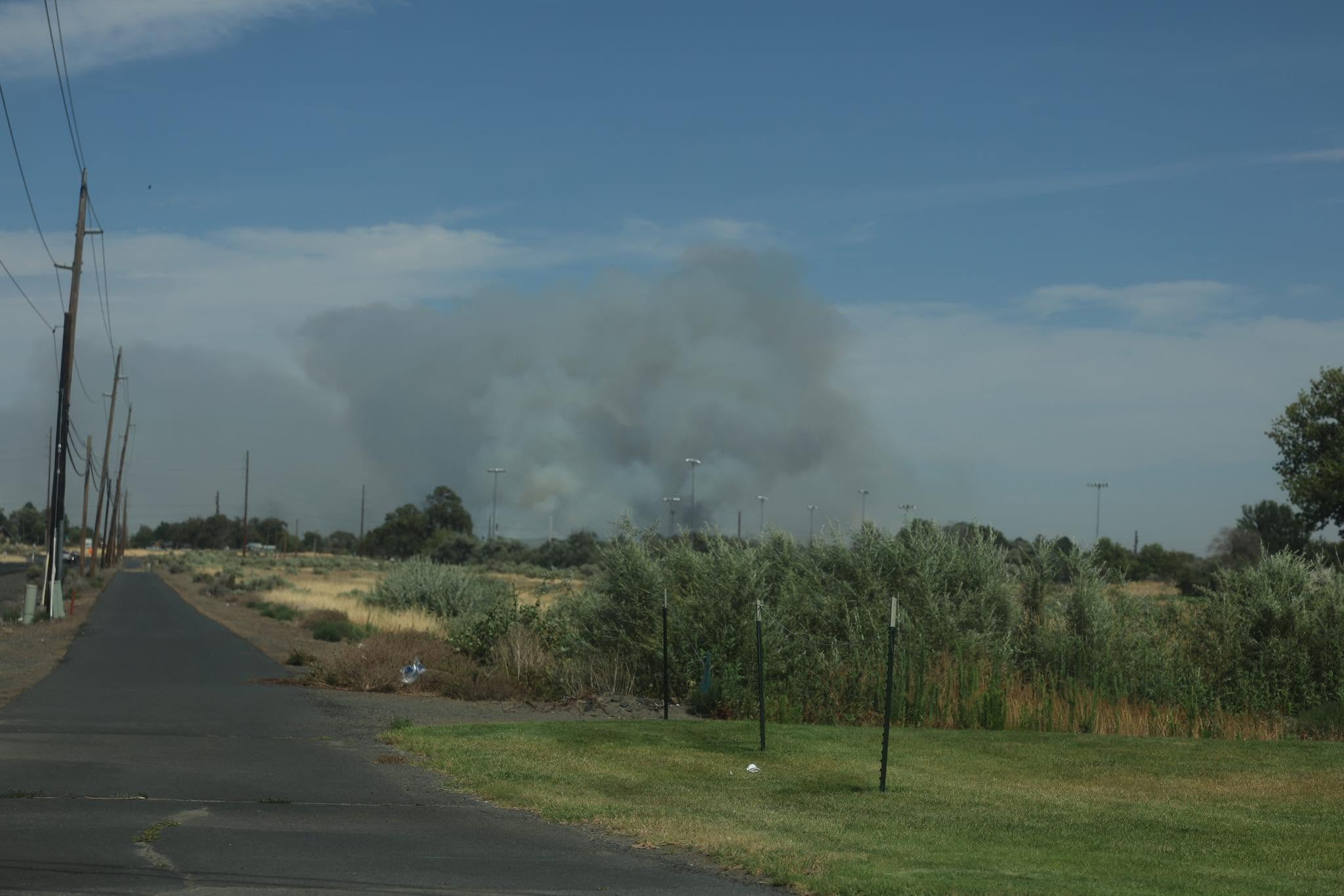Drought year brings meager wheat harvest in Eastern Oregon
Published 5:22 pm Wednesday, October 6, 2021

- Wheat lines the edge of a field on June 23, 2021, as a combine harvester harvests at Starvation Farms outside of Lexington. The farm produced a harvest of 60-70% of average in the wake of this summer’s heat wave and drought. The U.S. Department of Agriculture in September reported Oregon wheat farmers have experienced lower yields for three straight years.
PENDLETON — The rains have come in a trickle over the first two years that Andre Rauch has been back at his family’s wheat farms in Eastern Oregon.
Year after year, a dismal crop follows a record-breaking drought. The conditions have been so bad, Rauch said he was pleasantly surprised to see his crop producing between 60 to 70% of their average this year.
“That’s still very bad,” said Rauch, 31, a partner at Starvation Farms, his father’s 7,000-acre plot of land roughly 10 miles north of Lexington. “But when your expectations are worse, it looks good.”
In June, Rauch had been looking at a crop with 10 to 15 bushels per acre. They lucked out with a crop of 30 bushels per acre, he said.
But that’s still below the statewide average of roughly 45 bushels per acre, which marks the third straight year of “significant decline,” said Amanda Hoey, the chief executive officer for the Oregon Wheat Growers League and Oregon Wheat Commission.
“A lot of it, you’re up to the whim of mother nature,” said Rauch. “There’s only so much you can do.”
The drought and heat wave that hit the Pacific Northwest this year impacted farmers of various crops, but perhaps no industry has been harder than wheat farmers. Multiple consecutive droughts coupled with hot conditions have left most farmers relying on crop insurance because there is simply too little rain.
“Even when you have those financial supports in place to get through the year, it’s devastating to roll into your field and look at the crop you’ve put your livelihood into, all your heart and soul, and see it struggling because of natural conditions beyond your control,” said Hoey. “You wear out a whole lot of equipment, but you also wear out your mental health.”
A September small grain report from the United States Department of Agriculture shows that Oregon wheat farmers have experienced lower yields for three straight years.
Oregon’s winter wheat production dropped from 49.64 million bushels in 2019 to 46.4 million in 2020, and then plummeted in 2021 to 31.725 million, a 32% drop.
The decline follows overall regional trends of hotter and drier conditions. Data from the National Weather Service in Pendleton shows that June, July and August were hotter and drier than historical averages in Pendleton and Hermiston. Heppner saw the same conditions across the board except for the month of August, which was cooler than historical averages.
And the conditions have only been worsened by multiple dry years in a row, Hoey said.
“We’ve had a combination of impacts from the drought,” Hoey said. “Not only to the crop but to the quality of wheat overall.”
Janice Cooper, the managing director of the Wheat Marketing Center in Pendleton, said the quality of soft white wheat is being impacted by drought conditions.
“This year, because of the conditions with the lack of rain, everybody knew that we would have a different kind of year,” she said. “It wasn’t going to be our usual crop of wonderful soft white which is so appreciated around the world.”
The Pacific Northwest produces 95% of the world’s soft white wheat, Cooper said, and nearly all of that is exported overseas. The wheat is used for products like sponge cake, noodles and cookies. But with the drought bringing higher protein levels, it makes it difficult, or impossible, to produce these products, and that has overseas consumers concerned.
“In soft white, that’s not preferred,” Cooper said. “In soft white, the lower protein is better.”
Now, farmers are planting their winter wheat, looking toward another uncertain year. Hoey said this year has inspired her to advocate for financial buffers for farmers, legislation for preserving and strengthening producers through drought cycles and bringing resources for research that will improve crop resiliency.
“It’s tough to look forward,” said Hoey. “But I think we all appreciate that as much as we are challenged, we are all dealing with the same things. We are able to have a unified voice about what we need to keep small family operations going during a drought cycle. We’ve been here before.”









